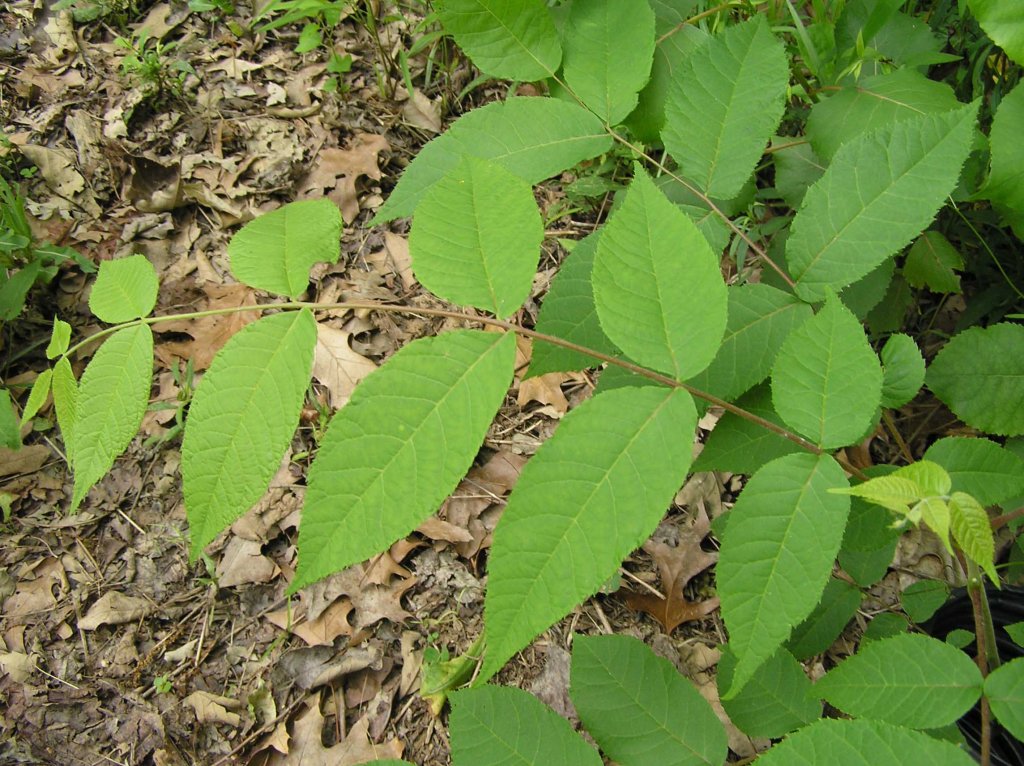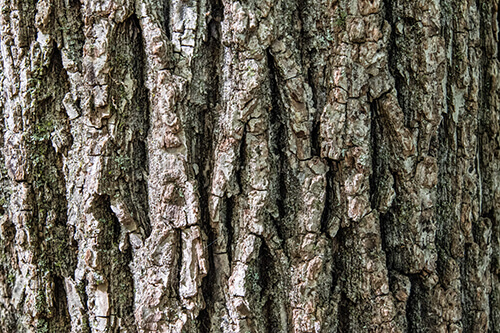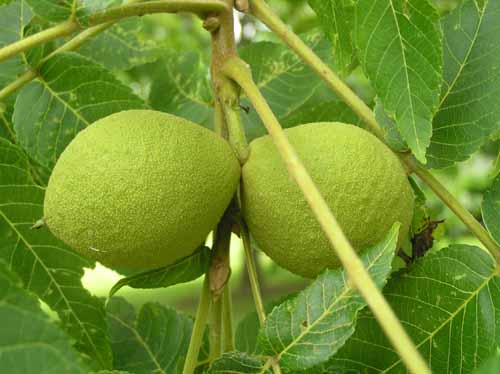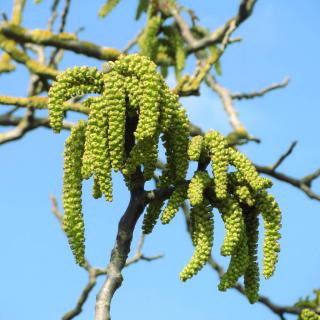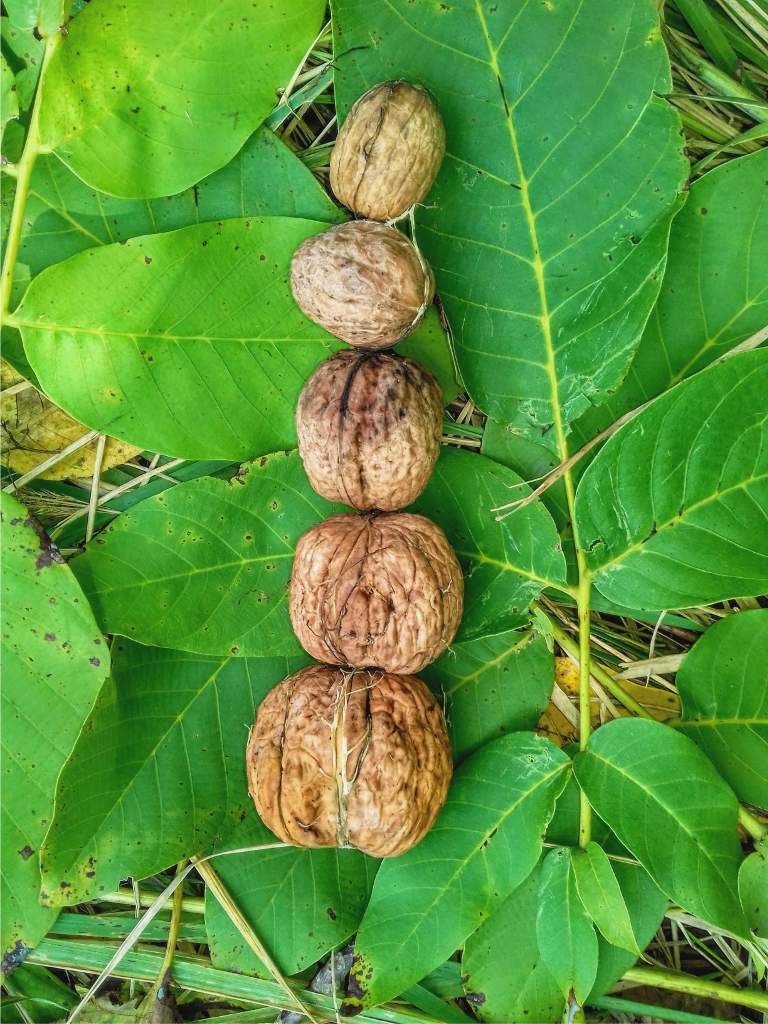Juglans Nigra
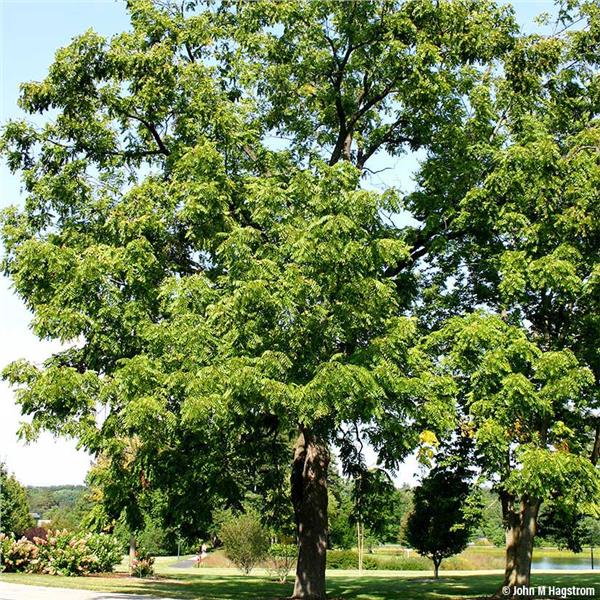
Native to the Eastern and Central United States, the black walnut tree is both strikingly beautiful and rich in history. Known chiefly for the nuts it produces, this tree has also been used extensively for its wood which is regarded by many as the finest in the world. For this reason, these trees were historically planted for lumber acquisition and have since become extremely valuable.
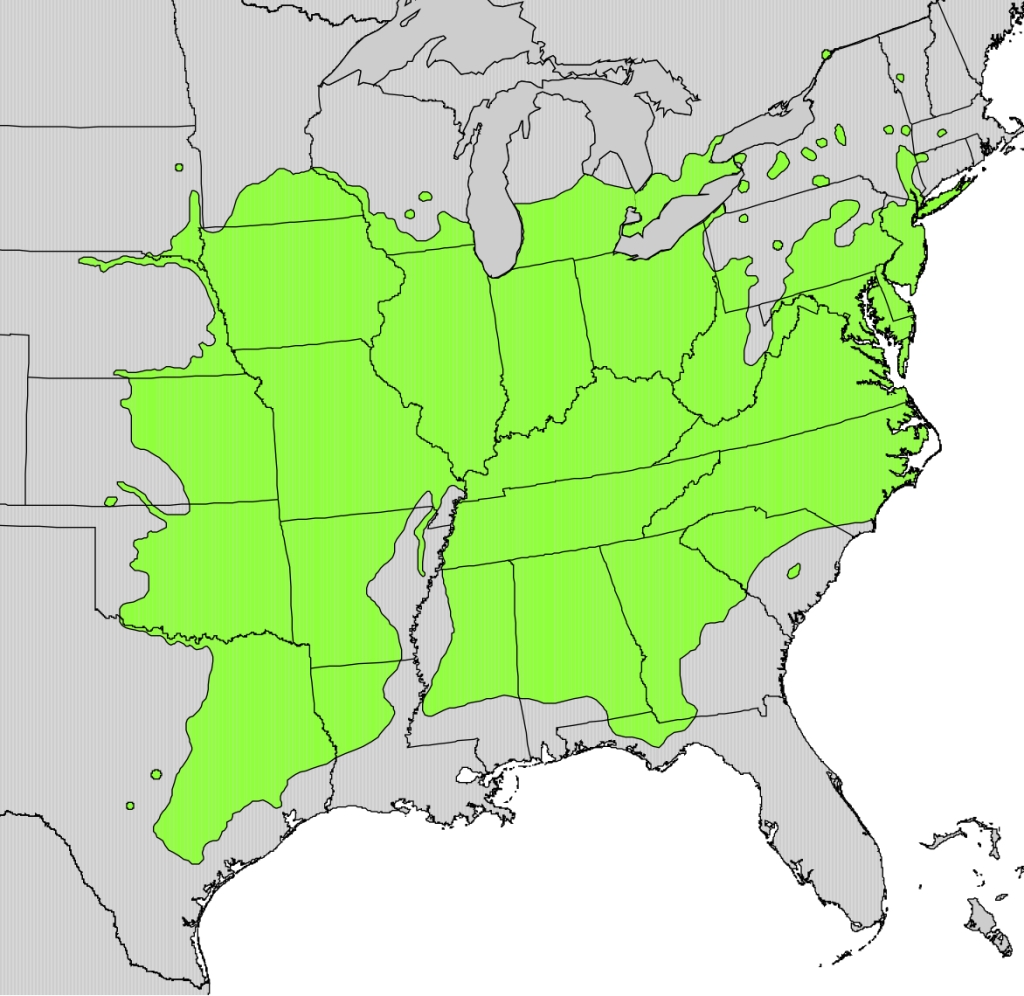
These trees can also live to be over 150 years old, with the oldest known specimen estimated to be 300 years of age and 25 meters tall. Interestingly, the roots of this tree secrete a toxin, known as juglone, which inhibits the growth of some other plants, giving them a competitive advantage over other species.
Morphologically, black walnut trees are identified by their compound leaves, green fruits, and deeply furrowed gray bark. The leaves are between one and two feet long and are made up of many two to three inch long “leaflets”. The dark gray bark of the tree consists of deep, vertical fissures and often shows prominent leaf scarring on the branches.
The walnuts themselves are found within the green fruits that fall from the trees in late October. These fruits develop from the tree’s female flowers which are fertilized in the spring when pollen from the male flowers, or catkins, is blown onto them by the wind. The flesh of the fruit is edible to squirrels and rodents, which aids in the dispersal of the walnut seed itself.
The walnut, a popular edible nut, can be eaten in many different ways and is a great source of omega-3 fatty acids. As mentioned, the wood is also incredibly desirable. It is incredibly strong, yet malleable. It was first used by Native Americans then by European settlers once they discovered it was particularly resistant to decay. Today, the wood is so valuable that entire trees have been known to be stolen for their high-priced wood. It is estimated that mature black walnut trees can bring about about $100,000 per acre in timbre value.
Resources
Ostermiller, Stephen: “Black Walnut” 1997. <http://ostermiller.org/tree/blackwalnut.html>
“Flora of North America.” <http://www.efloras.org/florataxon.aspx?flora_id=1&taxon_id=233500721>
Lohmiller, George: “Black Walnut Trees: The Roots of Evil” 2013. <http://www.almanac.com/content/black-walnut-trees-roots-evil>

